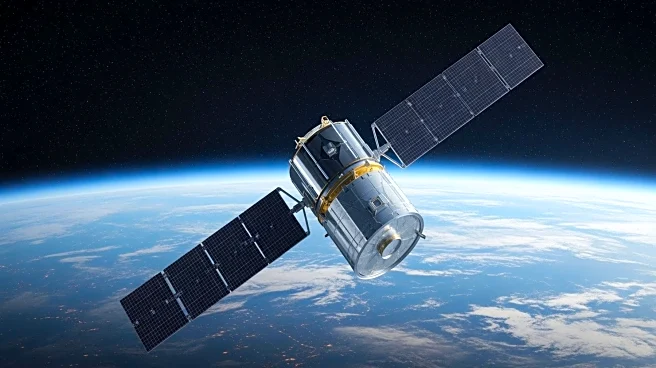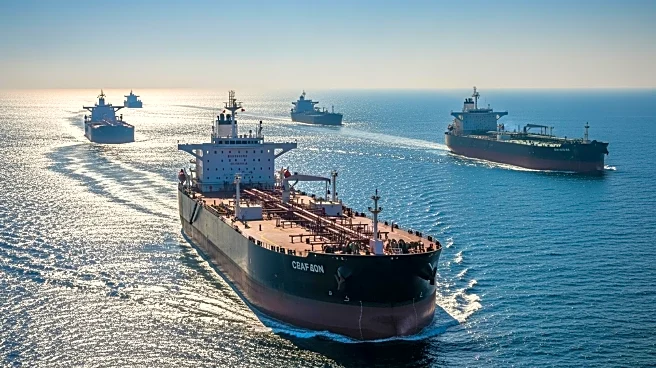What's Happening?
Iranian flagged tankers have reactivated their AIS transmitters after years of operating without them, a move that comes despite recent re-imposed sanctions by the United Nations. This change has been observed by several AIS signal aggregators, with 80%
of Iranian tankers transmitting location signals within the last 48 hours. The decision to turn on AIS systems may be an attempt by Iran to assert legitimacy and comply with international maritime regulations, potentially influenced by requirements from China, a major importer of Iranian oil.
Why It's Important?
The reactivation of AIS transponders by Iranian tankers could signal a shift in Iran's approach to navigating international sanctions. By complying with maritime regulations, Iran may be seeking to reduce the risk of interdiction and safeguard its oil exports, which are crucial for its economy. This development could impact global oil markets and geopolitical dynamics, particularly in relation to U.S. and Chinese interests in the region.
What's Next?
The move may lead to increased scrutiny of Iranian oil shipments and potential diplomatic negotiations regarding sanctions compliance. Stakeholders, including international maritime organizations and oil importers, may monitor the situation closely to assess its implications for global trade and security.
Beyond the Headlines
The decision to switch on AIS transponders reflects broader challenges faced by Iran in balancing economic needs with international pressure. The situation underscores the complexities of global trade and the strategic maneuvers countries employ to navigate sanctions and maintain economic stability.













